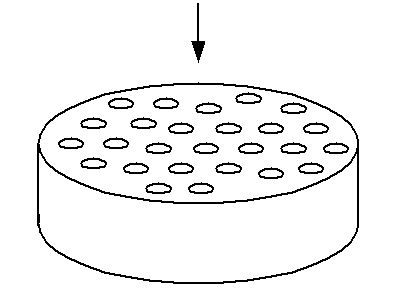A piece of rubber the size of 4 stacked quarters is needed for shock/vibration protection of electronics. It has been determined for the application that a Shore 'A' hardness of 35-40 works best. Due to mass constraints, the rubber is too heavy.
Is there a method to calculate the EFFECTIVE Shore 'A' hardness of a perforated piece of rubber that has a higher Shore 'A' hardness - with the intent that it's overall mass is acceptable due to the perforations? Assume the electronics circuit is the size of a quarter and presses flat against the rubber surface. For example, if there was a very simple linear relationship, then Shore A hardness 80 material with 50% of its volume removed with holes would yield an effective Shore 'A' of 40 for this application.
Let me know if there is a better metric for the rubber compression characteristic I am trying to control.

Thank you,
Dave
Is there a method to calculate the EFFECTIVE Shore 'A' hardness of a perforated piece of rubber that has a higher Shore 'A' hardness - with the intent that it's overall mass is acceptable due to the perforations? Assume the electronics circuit is the size of a quarter and presses flat against the rubber surface. For example, if there was a very simple linear relationship, then Shore A hardness 80 material with 50% of its volume removed with holes would yield an effective Shore 'A' of 40 for this application.
Let me know if there is a better metric for the rubber compression characteristic I am trying to control.

Thank you,
Dave
